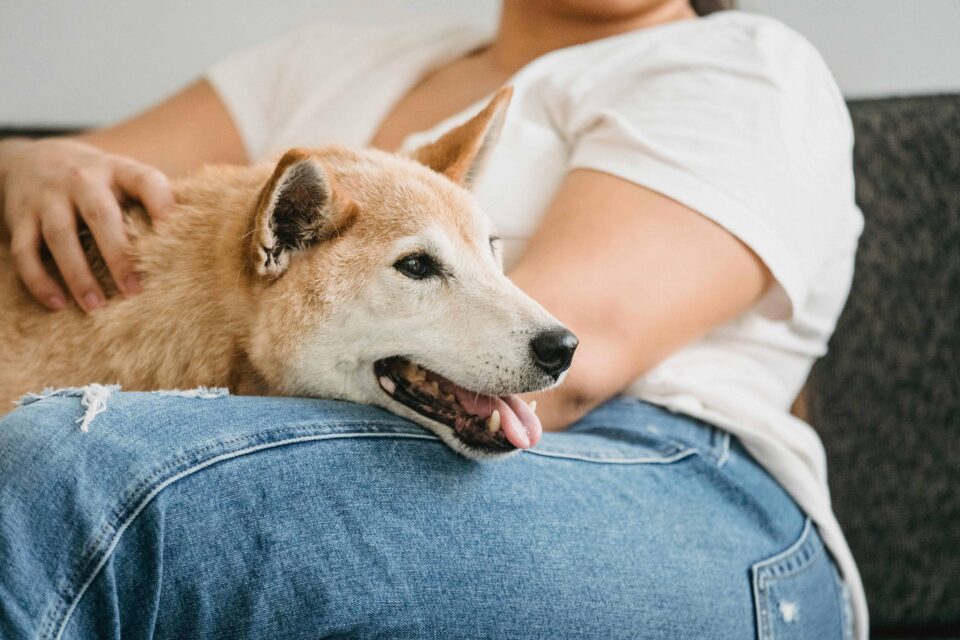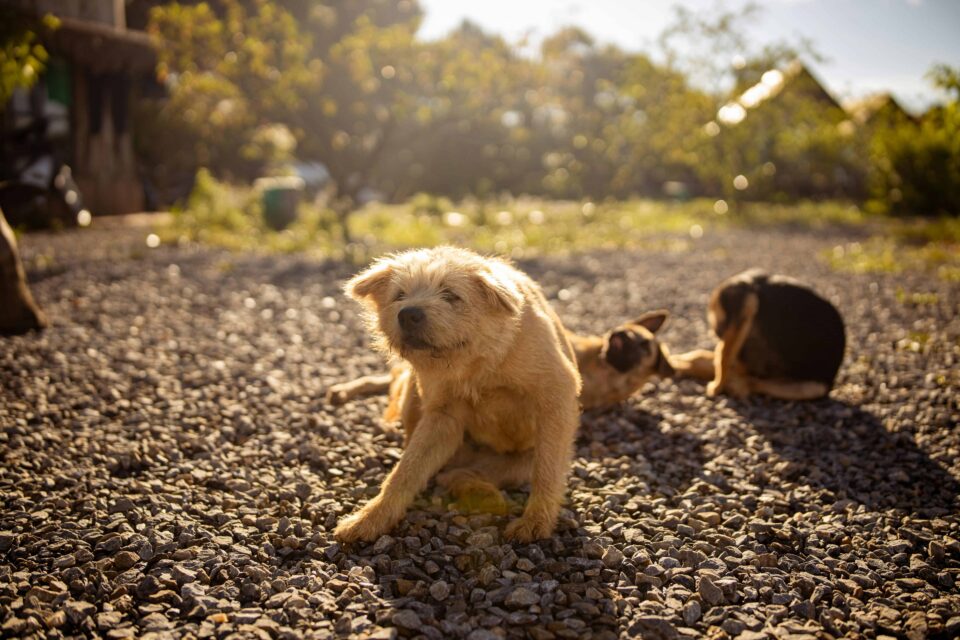Creating Calm Spaces: Dog Coping Strategies for Pet Anxiety Awareness Month
Dogs can experience stress and anxiety just like people. Changes in routine, loud noises, or separation can make them uneasy. Creating a calm environment can help ease their stress and improve their well-being.
Key Takeaways
- Dogs can experience anxiety due to loud noises, separation, or changes in routine.
- Creating a quiet space with familiar items can help them feel more secure.
- Herbal solutions and aromatherapy may support relaxation.
- Recognizing behavioral signs can help you address anxiety early.
- Routine and exercise play a big role in managing stress.
Understanding Dog Anxiety
Dogs show stress in different ways. Some bark excessively, while others become withdrawn. Understanding the triggers behind their anxiety can help you find the right solutions.
Common Anxiety Triggers
Separation anxiety, loud noises, and unfamiliar environments are common causes of dog anxiety. Fireworks, thunderstorms, and even a new pet in the home can cause stress. Identifying what triggers your dog’s discomfort can help you create a calmer space.
Signs of Anxiety in Dogs
Restlessness, panting, excessive licking, and trembling are signs your dog may be feeling stressed. Other behaviors, like pacing or dogs whining, can indicate they are seeking comfort or attention.
The Importance of a Safe Space
Providing a designated area for your dog to retreat when they feel anxious can be helpful. A cozy bed, soft lighting, and familiar scents can create a sense of security. Using calming aids, like essential oils, can further enhance relaxation.

How to Create a Calming Space for Your Dog
A well-prepared environment can make a big difference in helping your dog feel secure. The goal is to minimize stressors and provide comfort. Creating a structured space with calming elements can promote relaxation and ease anxiety. Small adjustments, like reducing noise and offering familiar scents, can have a lasting impact on your dog’s emotional well-being.
Choose a Quiet Location
Pick a space away from loud noises and heavy foot traffic. A cozy corner with a comfortable bed can help your dog feel safe. Adding white noise or soft music can also reduce sudden sounds that may startle them.
Use Familiar Scents and Items
Dogs rely on scent for comfort. A blanket with your scent or a favorite toy can provide reassurance. Consider using calming sprays or diffusers designed for dogs.
Herbal and Plant-Based Solutions
Certain herbs and essential oils can help reduce stress. Lavender, chamomile, and valerian root are commonly used in pet calming products. These natural ingredients can help calm your anxious dog without harsh chemicals.
Related: Critical Signs of Stress in Dogs: A Comprehensive Guide
The Role of Routine in Managing Anxiety
Dogs thrive on routine. A predictable schedule can provide stability and reduce stress. Simple daily habits, like feeding at the same time each day, can make dogs feel more secure. Consistency in exercise and sleep routines also helps them stay balanced and relaxed.
Consistent Feeding and Exercise
Regular mealtimes and daily walks can help your dog feel secure. Exercise releases energy and helps reduce anxiety. A tired dog is often a calmer dog.
Training and Positive Reinforcement
Teaching your dog simple commands can build their confidence. Positive reinforcement encourages good behavior and strengthens your bond.
Managing Separation Anxiety
If your dog struggles when left alone, gradually increasing the time apart can help. Leaving behind a familiar scent or a puzzle toy can make their alone time more comfortable.

Recognizing When Your Dog Needs Extra Support
While many dogs adjust to calming techniques, some may need additional support. Every dog responds differently to stress, and some may require extra attention to feel secure.
Identifying what works best for your pet and being patient with their progress can make a significant impact. Recognizing signs of severe anxiety can help you take the next steps.
When to Seek Professional Help
If your dog’s anxiety interferes with daily life, consulting a vet or trainer may help. Persistent restlessness, destructive behavior, or excessive vocalization could indicate a deeper issue.
Physical Symptoms of Stress
Anxiety can sometimes manifest physically. Changes in appetite, digestive issues, or signs of pain may signal discomfort. A holistic approach, including diet and environmental adjustments, may improve their well-being.
Emergency Situations
In severe cases, anxiety can escalate into panic. Knowing how to handle a pet emergency ensures you’re prepared to help your dog in stressful situations.
Related: Why Dogs Get So Excited When You Come Home
Creating a Calming Environment with Essential Oils
Aromatherapy can play a role in promoting relaxation. Essential oils like lavender and bergamot are known for their soothing properties. These scents can help reduce stress-related behaviors in dogs, such as excessive barking or restlessness. When used correctly, essential oils can create a peaceful atmosphere that promotes overall well-being.
How Diffusers Help
Using an essential oil diffuser can create a calming atmosphere. Slow, consistent diffusion helps spread the scent evenly, providing ongoing comfort.
Choosing Safe Essential Oils
Not all essential oils are safe for dogs. Stick to blends specifically designed for pets, like lavender, chamomile, and mimosa flower. Avoid strong scents that may be overwhelming.
Pairing Essential Oils with Other Techniques
Using aromatherapy alongside a calming routine can enhance its effects. Combining diffused oils with soft lighting and quiet sounds can create a full relaxation experience.
Promote Relaxation with the Essential Oil Diffuser and Calming Oil Set
Creating a peaceful space for your dog can make a big difference in managing stress. The Essential Oil Diffuser and Calming Oil Set for Dogs is designed to help your pet relax with natural plant-based ingredients. The ultrasonic diffuser evenly disperses calming essential oils like lavender and bergamot to support a tranquil environment.
This set is a simple way to introduce aromatherapy into your dog’s routine. Whether your dog struggles with separation anxiety, loud noises, or travel stress, a calming scent can provide comfort. Help your dog feel at ease with a soothing solution made just for them.
Final Thoughts
Helping your dog manage anxiety takes patience and understanding. A structured routine, calming environment, and natural solutions can go a long way. Whether it’s a designated quiet space or an essential oil diffuser, small changes can make a big difference. Supporting your dog during Pet Anxiety Awareness Month is a great way to prioritize their well-being year-round.
~Veterinarian Recommended